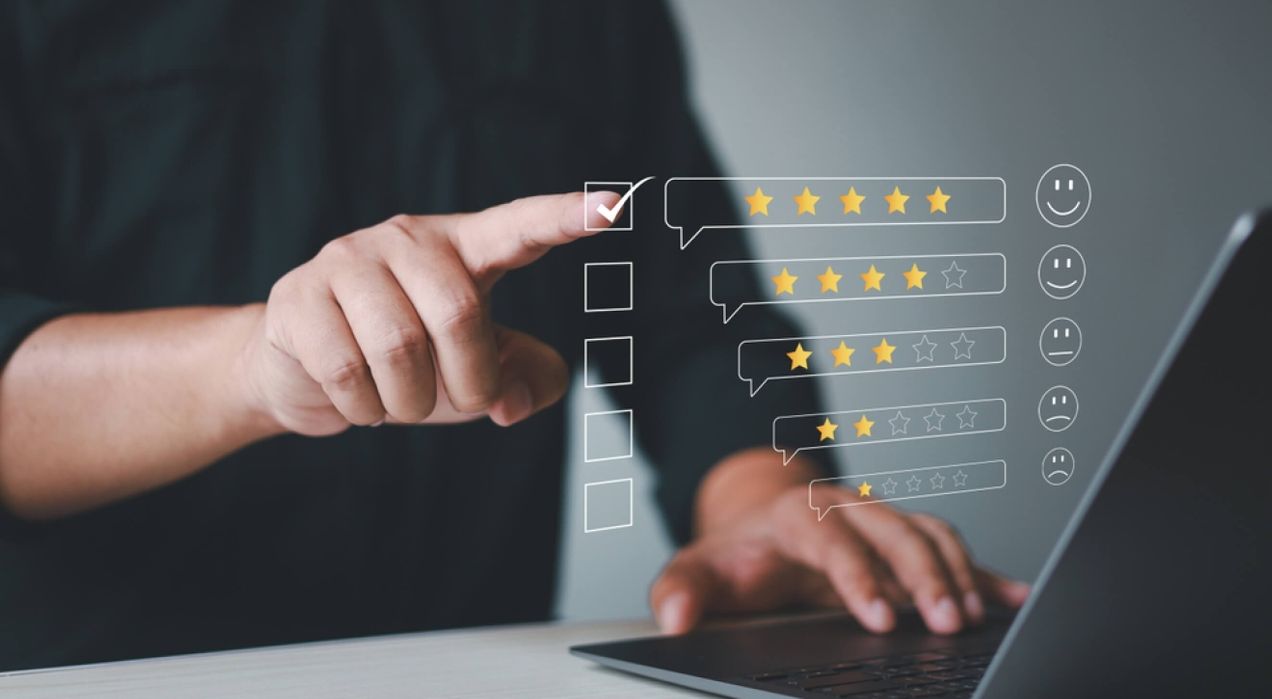Participants in survey: The key to meaningful workplace feedback collection

Imagine organizing a community book club. Everyone receives the same novel, but the way people show up is different. Some finish the book early and arrive ready with opinions. Some skim the last few chapters on the way in. A few don’t speak until they hear what others think, and a handful quietly absorb everything without saying much at all.
When the discussion begins, the value isn’t only in the points raised. It’s in who chose to speak, who held back, and what their level of participation reveals.
Surveys follow the same rhythm. Understanding the mix of participants and how they engage makes every response sharper, richer, and far more dependable.
And that’s exactly why mapping your survey participants is the first step to collecting meaningful feedback.
- Survey participants are individuals who share input and opinions that shape workplace insights.
- Choosing participants by role, location, and department improves relevance and balance.
- Inclusivity and clear communication help increase participation and reduce survey fatigue.
- Knowing who responds prevents skewed insights and strengthens decision-making.
- CultureMonkey boosts participation with AI personalization, mobile access, anonymity, nudges, and analytics.
What do we mean by "participants in survey"?

The individuals who actively provide input, context, and opinions by answering structured feedback questions are considered to be survey participants. This usually includes employees across different levels and functions who help organizations understand what’s working and what needs attention. These survey participants play a direct role in shaping decisions, improving processes, and influencing the employee experience.
They help highlight real challenges and opportunities that aren’t always visible in day-to-day operations. Their responses also help organizations learn how to get survey responses more consistently over time.
Organizations can use existing data, such as CRM records or past interactions, to identify and target the right people for their surveys. Additionally, organizations use various methods to find participants, including leveraging professional networks and internal databases, to ensure they reach the most relevant respondents.
Now that we’ve grounded the meaning, let’s explore who qualifies as a participant in workplace surveys.
Who qualifies as a participant in workplace surveys?
Not every person in the organization automatically becomes part of your survey audience, yet the people you choose can shape the quality of insights you receive.
Participants in survey programs should be selected with intention, clarity, and a clear link to the survey’s purpose to ensure you have the right survey respondents. Here’s who typically qualifies:
- Full-time employees: They provide consistent, long-term feedback and often serve as the primary survey participants in most organizations.
- Part-time and contractual staff: Their experience may differ from full-time teams, making their input valuable when you want broader perspectives from survey takers.
- New hires: Early impressions help you understand onboarding gaps and improve employee survey participation during critical first months.
- Managers and team leads: They offer context on team challenges and help deepen responses within your respondent survey groups.
- Remote and hybrid workers: To get survey responses that represent the whole workforce and include employees beyond the office floor.
- Frontline and non-desk workers: Often overlooked, they bring operational insights you won’t find elsewhere, especially when you’re trying to engage survey participants more consistently.
- Employees going through transitions: Teams facing restructuring, role shifts, or leadership changes can provide timely feedback that other survey respondents may not capture.
With that in mind, let’s look at whether all employees should be participants in your survey.
Should all employees be participants in your survey?

Whether all employees should be participants in your survey depends on the purpose behind the feedback you want to collect. Some surveys are designed for the entire workforce, such as engagement assessments, while others are better suited for specific groups.
The key is to make sure survey participants align with the decisions you’re trying to inform, so you’re not gathering data that feels irrelevant or overwhelming. Determining the appropriate sample size is crucial for ensuring your survey results are both reliable and generalizable.
In many cases, it makes sense to involve everyone. Doing so helps you get survey responses that reflect different roles, work environments, and daily experiences. When every employee is invited, you also reduce the risk of limiting insights to a small set of survey takers. A broad sample helps you understand trends, compare departments, and strengthen employee survey participation across the board.
That said, not every survey needs the entire organization. Sometimes you only need input from new hires, a specific team, or a group affected by a policy change. Choosing participants in survey programs based on relevance ensures better-quality insights. It also helps you find survey participants who can provide actionable responses instead of generic feedback. Thoughtful targeting leads to more meaningful engagement from survey respondents and supports better decision-making.
To make that clearer, let’s move into survey participants vs. survey respondents.
Survey participants vs. Survey respondents: Is there a difference?

Many people use “survey participants” and “survey respondents” as if they mean the same thing, but there’s a small distinction worth noting. Understanding this difference helps teams plan how to get survey responses more effectively.
It also clarifies who is part of the respondent survey group and who actually completes it.
Once you understand that difference, how do you choose the right people based on role, place, and function?
Survey participation criteria: Role, location, or department?

Choosing the right participants in survey programs starts with understanding who can provide the most relevant insights for the topic you’re exploring. Including participants with relevant backgrounds ensures you capture a comprehensive range of perspectives and expertise.
Role, location, and department each shape how people experience work, so these criteria matter more than most leaders realize.
Role
Different roles come with different responsibilities, challenges, and levels of visibility across the organization. Including a mix of roles helps you get survey responses that highlight diverse viewpoints, from frontline employees to senior managers. It also ensures your respondent survey data doesn’t lean too heavily on one layer of the company.
When survey takers across roles participate, you uncover insights that help improve processes, communication, and employee survey participation for future cycles.
Location
Workplace experiences can vary significantly across offices, regions, or even shifts. Teams in different locations may face unique cultural, logistical, or operational issues that generic surveys may not capture.
When you find survey participants across multiple locations, it helps reveal gaps that leaders may overlook. This gives you a clearer picture of workplace sentiment and encourages more engaging survey participants in future surveys.
(Source: GlobalSurvey)
Department
Departments often operate like mini-ecosystems with their own priorities, workflows, and challenges. Including cross-department survey participants ensures you’re not basing decisions on one team’s experiences.
Comparing trends across departments helps you understand where support is needed and where improvements are working. It also expands your pool of survey respondents, making your respondent survey results stronger and easier to act on.
But how do you make sure your choices don’t accidentally exclude important voices?
How to ensure inclusivity when choosing survey participants?

Creating an inclusive approach when selecting participants in survey programs ensures every employee feels represented. Inclusivity broadens the perspectives you capture, helping you get survey responses that reflect real workplace experiences. When employees see that their voices matter, they’re more likely to become engaged survey participants over time.
Ensuring inclusivity means selecting participants across employment types, tenure, work environments, and underrepresented groups so every voice is represented fairly.
Removing accessibility barriers and encouraging hesitant groups increases participation quality and strengthens overall survey insights.
- Consider all employment types: Include full-time, part-time, contract, remote, and non-desk workers. This ensures your pool of survey participants captures varied experiences instead of focusing only on office-based employees. A wider mix also supports stronger respondent survey insights.
- Include different tenure groups: New hires, mid-tenure employees, and long-timers often experience the workplace differently. Choosing them intentionally helps you find survey participants whose feedback reveals gaps across the employee journey—not just in one area.
- Account for work environments: Office, field, hybrid, and shift-based teams don’t always face the same challenges. Ensuring inclusive participation helps organizations understand how to get people to do surveys even when access or schedules differ.
- Invite underrepresented voices: Some groups may hesitate to share feedback unless specifically encouraged. Proactively including them builds trust, improves employee survey participation, and brings forward insights that regular survey takers might miss.
- Remove accessibility barriers: Mobile access, simple language, and flexible completion times make it easier for all survey respondents to participate. Reducing friction strengthens participation rates and leads to more reliable data from every corner of the workplace.
Inclusivity isn’t just a values exercise; it’s how you uncover the full truth behind workplace experiences. Once you’ve included the right people, how do you inspire them to actually participate?
How to encourage more employees to become active participants?
Encouraging employees to become active participants in survey programs requires effectively recruiting survey participants and increasing engagement rates, it’s important to use targeted strategies that go beyond simple invitations. People engage when they understand the purpose, trust the process, and feel their feedback leads to action.
- Explain the “why” clearly: Employees are more likely to participate when they know why their input matters. A simple explanation helps you get survey responses that feel meaningful instead of routine. Clear intent also motivates even hesitant survey respondents to share their views.
- Show employees what has changed before: When people see previous feedback turning into real improvements, they feel heard. This encourages them to take part again and strengthens employee survey participation. It also helps convert occasional survey takers into consistent contributors.
- Make surveys short and accessible: Simple, mobile-friendly surveys reduce effort and help you find survey participants more willing to respond during busy schedules. A quick process increases response rates across teams.
- Offer survey windows that respect workloads: Flexible timelines help remote teams, shift workers, and frontline staff participate without pressure. This boosts participation from groups that often get overlooked in respondent survey plans.
- Use reminders that don’t feel intrusive: Friendly nudges through email, chat tools, or SMS can significantly increase engagement. Smart reminders help employees remember without feeling pushed, which improves how to get people to do surveys consistently.
- Reinforce confidentiality and trust: Employees often skip surveys because they worry about being identified. Reassuring them that survey participants remain anonymous builds confidence and leads to more honest feedback from all groups involved.
Are survey participants really that important?
Leaders often assume volume alone makes insights trustworthy. But response totals can hide serious gaps in who actually participates. If certain groups answer more often than others, your results start reflecting habits of the loudest voices instead of the full picture.
That uneven mix can distort sentiment patterns, misrepresent priority areas, and push decisions in the wrong direction.
The only way to avoid that drift is to understand exactly who is responding and how balanced the participant pool really is.
Recent data from Clootrack’s 2025 benchmarks show average survey response rates of 20 to 30% and note that useful benchmarks depend entirely on audience specifics, reinforcing that participant clarity is not optional but the key to getting dependable survey insights every single time.
But how can you tell if participation gaps might distort your results?
Communication strategies to boost participant response rates

Clear, early communication about purpose, expectations, and confidentiality helps employees understand why their participation matters and encourages stronger engagement.
Using multiple channels and gentle reminders increases visibility, reduces confusion, and supports higher response rates from employees who may otherwise overlook or forget the survey.
Clear and consistent communication can make the difference between low participation and a survey that employees genuinely care about. When employees understand what’s expected from participants in survey programs, they’re more likely to engage. Transparency, timing, and tone all shape how survey participants perceive the request, especially when you’re trying to get survey responses that represent the full workplace.
Start by setting expectations early. Announce the survey in advance so employees aren’t caught off guard, and explain what the survey is about, who it’s for, and how the data will be used. This helps employees feel included rather than pressured. It also reduces confusion among survey respondents who want clarity before they participate.
Using multiple channels, email, chat tools, town halls, or team huddles, ensures your message reaches diverse survey takers, including those who may not check corporate communication platforms regularly.
When communicating survey results, organizations can also use positive feedback and improvements highlighted in the survey within their marketing materials to showcase progress and build trust with both employees and external audiences.
Personalized nudges can help you find survey participants who intend to respond but forget due to workload. Use short, friendly notes that reinforce confidentiality and highlight why their participation matters. This approach grows employee survey participation over time and helps organizations engage survey participants without overwhelming them.
And after you communicate well, what’s the next crucial step once responses start coming in?
How to follow up with participants after the survey?

Employees want to know their time and honesty mattered, and thoughtful follow-up helps strengthen trust and lays the groundwork for future research activities.
This step also boosts employee survey participation in future cycles because people see clear outcomes, not just empty promises.
- Share a high-level summary of results: Give survey participants an overview of key themes, wins, and concerns. This shows transparency and helps survey respondents feel their contributions led to meaningful insights. It also reinforces that survey takers genuinely influence decisions.
- Explain what actions will be taken: Outline clear next steps based on the feedback you received. Even small commitments help you get survey responses in the future, because employees see leaders acting on what they shared.
- Thank employees sincerely: A simple acknowledgment goes a long way in making participants feel valued. Appreciation helps maintain a positive relationship with survey participants and can improve attitudes toward future respondent survey cycles.
- Involve teams in shaping solutions: Invite employees to co-create action plans where appropriate. This approach empowers survey takers and makes them active partners rather than passive contributors, helping you find survey participants willing to stay engaged.
- Track and report progress regularly: Share updates as improvements roll out. When survey respondents see progress, they’re more likely to stay involved, support changes, and participate again in upcoming surveys.
To prevent that, let’s dive into managing survey fatigue among frequent participants.
Managing survey fatigue among frequent participants

Survey fatigue is a real challenge, especially when the same groups are repeatedly asked for input. Frequent participants in survey cycles may start feeling that the process is repetitive, time-consuming, or disconnected from real outcomes. When that happens, response quality drops, and so does employee survey participation.
To avoid this, focus on timing, relevance, and variety. Instead of launching multiple generic surveys, tailor each one to a clear purpose so survey takers understand why their feedback matters. Rotating topics or targeting specific teams helps reduce overload and keeps your pool of survey respondents engaged.
Involving more participants can also help distribute the survey burden, reducing fatigue among frequent respondents. This also ensures you get survey responses that feel thoughtful rather than rushed. When you find survey participants a bit worn out, a pause or redesigned format can help reignite interest.
Nothing reduces fatigue faster than seeing real results from previous feedback while ensuring compliance with data security regulations. Share updates, highlight quick wins, and communicate how survey participants shaped decisions.
When employees see their input driving meaningful change, they remain more willing to contribute—even if they’re part of the frequent respondent survey group. This trust-based approach keeps participants engaged without pressuring them.
That’s where we discuss engaging non-desk workers as participants in surveys.
Engaging non-desk workers as participants in surveys
Non-desk employees are often the hardest group to reach, yet they hold some of the most valuable workplace insights. Engaging them as participants in survey programs requires a different approach—one that respects their schedules, environment, and access limitations.
When done right, this group can significantly improve the quality of your respondent survey data.
Engaging non-desk workers requires mobile-friendly surveys, simple delivery channels like QR codes or SMS, and short formats.
Clear anonymity, accessible completion points, and familiar tools help hesitant frontline employees participate confidently, improving response quality and representation.
- Use mobile-friendly survey formats: Non-desk teams rely on phones far more than laptops. Mobile access helps you get survey responses quickly and makes participation easier for survey takers who move constantly throughout the day. Organizations can also engage website respondents by providing easy access to surveys through company intranets or web portals, allowing employees to participate directly from the website.
- Share surveys through simple, familiar channels: QR codes, SMS links, and breakroom posters can reach employees who don’t check email regularly. This makes it easier to find survey participants who might otherwise be overlooked.
- Offer short, focused surveys: Shift workers often have limited downtime. Keeping surveys brief boosts employee survey participation and encourages more consistent engagement among frontline survey respondents.
- Create convenient completion opportunities: Provide tablets at shift start, break times, or team huddles. This removes barriers and ensures non-desk survey participants can contribute without disrupting their routine.
- Reinforce anonymity and purpose clearly: Many non-desk workers worry about being identified. Simple reassurances help turn hesitant employees into active, engaged survey participants and improve how to get people to do surveys consistently.
To answer that, let’s explore how AI can personalize the survey experience for each participant.
How can AI help personalize the survey experience for each participant?

AI helps tailor surveys so they feel personal and meaningful. By leveraging more data from various sources, AI can further personalize survey experiences and improve response quality. This naturally boosts employee survey participation and helps you get survey responses that reflect true workplace sentiment.
- Adaptive question paths: AI can adjust questions in real time based on previous answers. This keeps survey takers engaged and ensures survey respondents only see questions that apply to their experiences, reducing drop-offs.
- Smart timing recommendations: AI identifies when participants in survey cycles are most likely to respond. By sending surveys at the right time, you find survey participants more willing to complete them without reminders.
- Personalized reminders: Instead of generic nudges, AI creates reminders based on patterns, preferences, and behavior. This improves how to get people to do surveys without feeling pressured.
- Context-aware content: AI can tailor questions to job role, department, or location, helping survey participants feel the survey speaks directly to their environment. This increases engagement among survey respondents.
- Sentiment-driven follow-ups: After analyzing feedback, AI recommends actions or follow-up questions based on employee sentiment. This strengthens trust with survey takers and encourages future participation.
- Reduced survey fatigue: AI tracks participation frequency and adjusts outreach so frequent survey respondents aren’t overwhelmed. This ensures healthier long-term engagement and supports a more reliable respondent survey group.
But even with AI, what mistakes can still weaken participant selection?
Common mistakes when selecting participants in survey programs

Small mistakes can weaken the quality of insights you collect. Market researchers use systematic approaches to avoid these common mistakes in participant selection and ensure high-quality insights. Understanding these common pitfalls helps you get survey responses that actually reflect what’s happening across the workplace.
- Inviting only certain teams or roles: Limiting outreach to familiar groups creates skewed insights. Broader selection helps you find survey participants with diverse perspectives and avoids overburdening the same survey takers repeatedly.
- Ignoring non-desk or remote workers: These employees often have valuable insights but are frequently overlooked. Excluding them reduces the reliability of your respondent survey data and lowers long-term engagement.
- Relying on outdated participant lists: Roles change, new hires join, and teams shift. Using old data leads to missed survey participants and incomplete feedback from survey respondents who should have been included.
- Selecting participants based on convenience: Choosing only easily reachable employees may speed things up, but it weakens data quality. Strong insights come from engaging survey participants across functions, shifts, and locations.
- Not considering confidentiality concerns: If certain groups feel exposed, they may skip the survey entirely. Addressing these concerns early helps you get survey responses that are honest and increases trust among all survey takers.
So what do organizations rely on to improve participation and quality without guesswork?
Why do HR leaders trust CultureMonkey to boost survey participation rates?

HR teams want survey programs that employees actually engage with instead of ignoring. By improving participant engagement and response accuracy, CultureMonkey helps organizations collect high-quality data that is valid, reliable, and valuable for research insights.
1. AI-driven personalization
CultureMonkey uses behavior patterns, past responses, and role-based context to shape each employee’s survey experience. This means survey takers receive questions that genuinely apply to their daily work instead of generic forms.
Users can also easily create and share their own surveys to gather targeted feedback for specific research needs, ensuring the data collected is relevant and actionable.
2. Mobile-friendly experience
Non-desk, hybrid, and remote employees often struggle with traditional survey tools, making online surveys a necessary alternative. CultureMonkey removes this barrier with smooth mobile access that lets survey participants respond anytime with minimal effort.
This mobile-friendly experience enables seamless participation in surveys and research projects through digital and mobile platforms, fostering a community-driven approach to gathering data.
3. Strong anonymity controls
Employees open up more when they trust the platform. CultureMonkey ensures confidentiality through strict data handling and anonymity features that protect every response. This reassurance encourages survey participants to share honest, unfiltered feedback, increasing the value of data collected from survey respondents across different teams.

Understand every survey participant clearly with CultureMonkey Surveys
Talk to Sales4. Smart nudges and reminders
Instead of sending generic follow-ups, CultureMonkey uses smart nudges that feel timely and relevant. These reminders help you get survey responses from employees who may have good intentions but busy schedules. The platform keeps messages friendly and purposeful, which strengthens engagement among both occasional and frequent survey takers.
Additionally, CultureMonkey can leverage social media platforms to reach and remind employees about survey participation, ensuring higher visibility and response rates.
5. Deep analytics and actionable insights
CultureMonkey’s analytics help organizations identify patterns in employee feedback, uncovering trends across roles, locations, and tenure groups. This helps leaders understand what survey participants are really trying to say.
These insights make it easier to take action, reassuring survey respondents that their input matters and driving higher participation in future cycles.
6. Seamless integration with workflows
CultureMonkey connects directly with HR systems, communication tools, and everyday software employees already use. This reduces friction for survey participants and simplifies the process for HR teams, including the collection of registration email addresses for survey participants.
Conclusion
Collecting meaningful feedback starts with choosing the right participants in survey programs and giving them a clear, respectful experience. When employees understand the purpose, trust the process, and see action taken, they shift from passive survey takers to engaged survey participants who share honest insights.
Strong communication, thoughtful follow-up, and reducing fatigue all play a role in improving employee survey participation and strengthening the quality of responses across teams, locations, and roles. Engaging the right participants ensures you gain an accurate picture of employee experiences and needs.
As workplace expectations evolve, organizations need a smarter way to get survey responses consistently and connect with every group of survey respondents. If you want a platform that simplifies the entire journey and helps you engage survey participants more effectively, CultureMonkey is the ideal partner to support your feedback strategy.
Book a demo with CultureMonkey.
FAQs
1. How to handle low survey participation rates?
Low participation often signals unclear communication, timing issues, or employees feeling unheard. Start by explaining the survey’s purpose and how responses will be used. Make the survey short, accessible, and mobile-friendly to support busy survey takers. Reinforce confidentiality so participants feel safe sharing feedback. Share past improvements to survey respondents and strengthen trust for future cycles.
2. How many participants are enough for an employee survey?
The ideal number depends on company size, but aim for a response pool large enough to reflect different teams, shifts, and locations. Most organizations target a minimum of 60–70% participation to ensure data reliability. This helps you get survey responses that truly represent workplace experiences and reduces bias that arise when a small group of survey takers responds.
3. How can HR ensure survey participants stay anonymous?
Anonymity starts with using trusted survey platforms that separate identities from responses. Avoid tracking individual answers and only share aggregated insights. Communicate clearly that survey participants cannot be identified, which increases honesty among survey respondents. Limit demographic filters to prevent singling out small groups. When employees trust confidentiality, they participate more freely and employee survey participation becomes stronger.
4. Should we include new hires or only long-term employees in surveys?
Both groups provide valuable insights, so include them as participants in survey programs. New hires highlight onboarding gaps, clarity issues, and early impressions. Long-term employees reveal deeper cultural patterns and operational challenges. Involving both helps you get survey responses covering the full employee journey. This balanced mix strengthens your respondent survey data and supports more informed decision-making.
5. How do you follow up with survey participants after results are shared?
Share a clear summary of findings and outline what actions will be taken and when employees can expect updates. Invite teams to contribute ideas where appropriate, using social media messages to keep survey takers involved beyond the response stage. Regular progress reports help survey respondents see their impact, building trust and improving employee survey participation in future cycles.
6. What’s a healthy participation rate for employee surveys?
A strong participation rate typically falls between 70–85%, depending on organization size and survey frequency. Rates in this range ensure your respondent survey data reflects diverse employee experiences across roles and locations. Higher participation shows employees trust the process, while lower engagement suggests communication gaps or survey fatigue. Consistently engaging survey participants leads to more accurate, actionable insights.






